How to program authentic-sounding percussion parts
Create convincing woodblock and bell parts with our guide

The 'bells and blocks' arm of the percussion family comprises cowbells, agogos, woodblocks, temple blocks, and the bell tree. With the exception of the last one, these are metal and wood variations on essentially the same thing: a hollow chamber struck with a stick or beater to produce a short, high-impact attacking sound. Bells in this context are of the clapperless kind, rather than the clappered hand and cowbells that are shaken rather than struck to elicit sound.
In this tutorial, we'll show you how to program authentic latin-style patterns for each of these five simple but effective instruments, and demonstrate some of the ways in which they can be employed in a supporting role around the drum kit. In the interest of maintaining the requisite 'live' feel, all of the percussion parts here are unquantised.
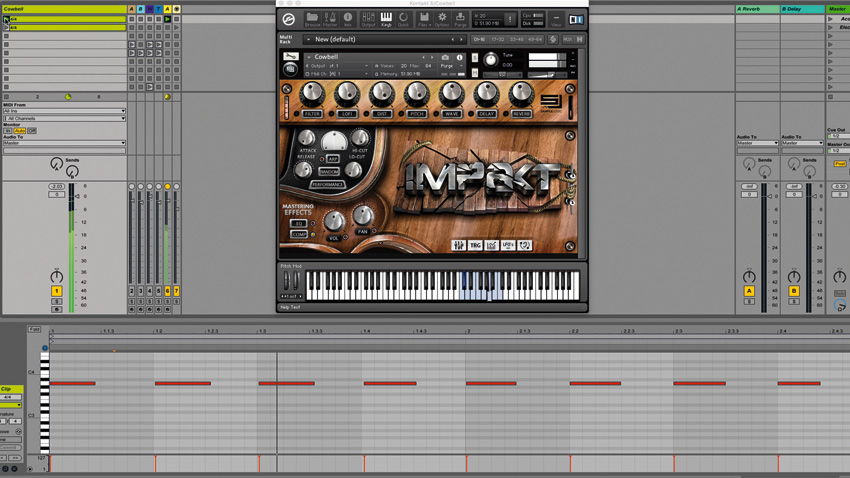
Step 1: The cowbell is a rectangular metal bell that can create a range of tones depending on how you strike it, but it's often played in rock and dance by hitting its mouth - hard - with the stick's shoulder. Here's the most elemental percussion part known to man: the on-beat cowbell. We're using Sample Logic's Impakt library.
Cowbell acoustic kit
Cowbell electronic kit
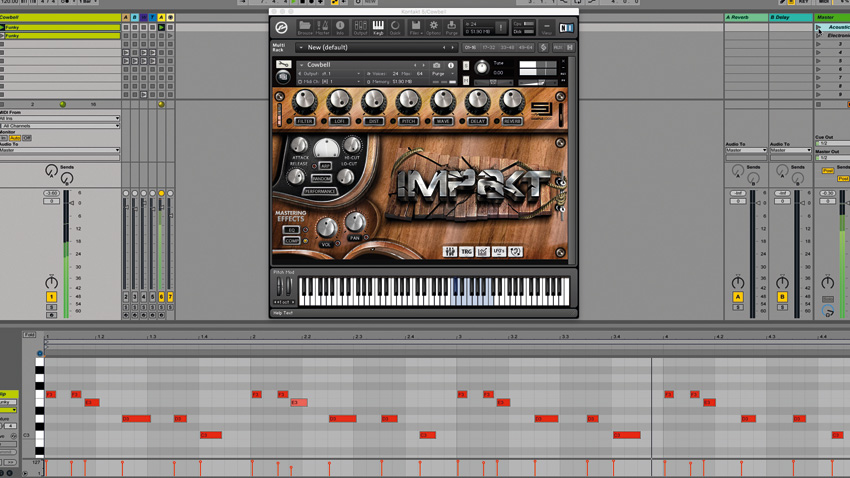
Step 2: Like we said, there's more to the cowbell than just the bludgeoning 4/4. Striking the top surface with the tip of the stick, for example, yields a quieter, thinner sound that contrasts well with the main 'mouth' hits, and further tonal variation can be had by damping the bell with the hand. Here's a rather more intricate rhythm.
Cowbell acoustic kit
Cowbell electronic kit
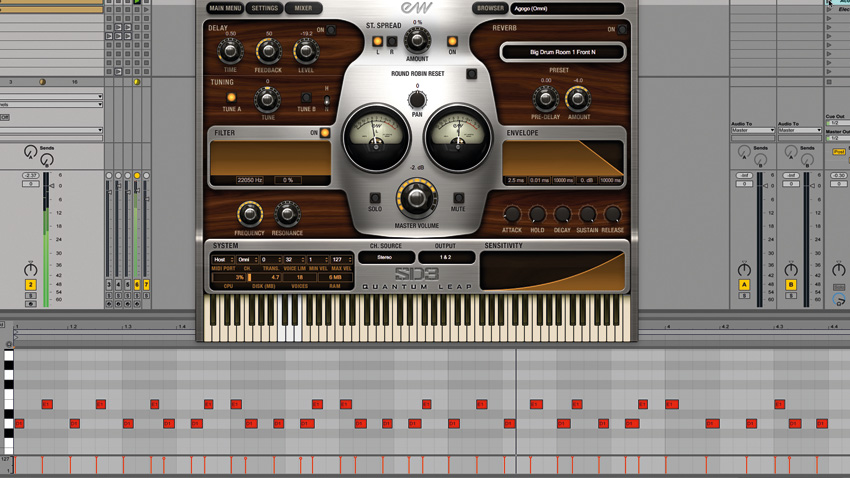
Step 3: The agogos are a pair of high-pitched metal bells connected via a U-shaped metal rod. A samba staple, and an intrinsic element of go-go, they'll inject a tinkly touch of funk into any dance cut, creating semi-melodic patterns that seem to float above the rest of the percussion. EastWest Stormdrum 3 is our weapon of choice.
Agogos acoustic kit
Agogos electronic kit
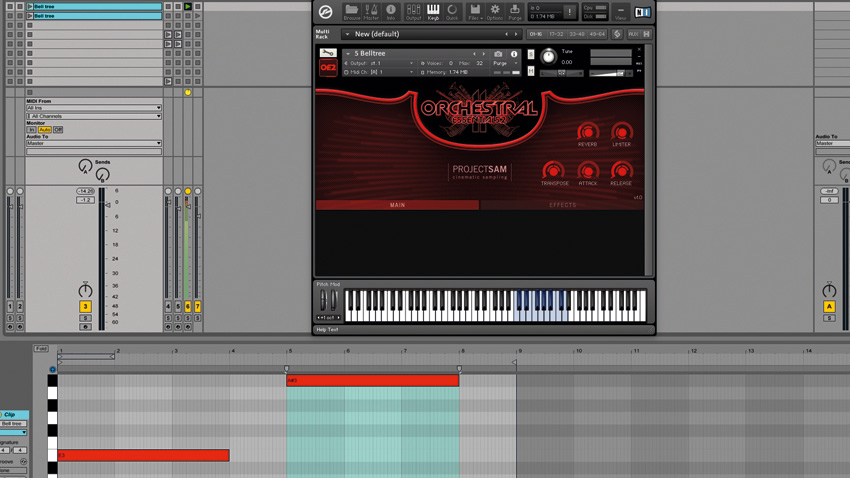
Step 4: The bell tree (actually more orchestral than Latin) is often used to mark a phrase start/end. It's a set of progressively sized shallow metal 'cups', and running a stick from one end to the other gives a shimmering glissando. Bells can be struck individually, too. Project Sam's Orchestral Essentials II has a good bell tree patch.
Bell tree acoustic kit
Bell tree electronic kit
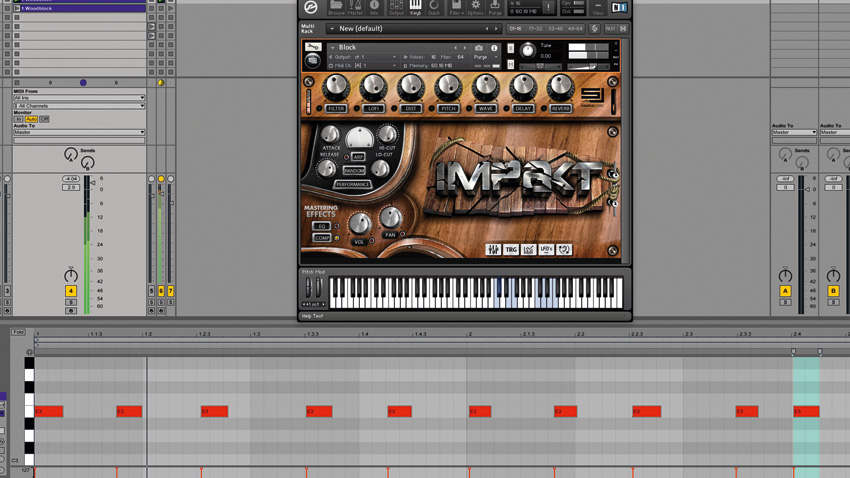
Step 5: The woodblock is a block of wood with a wide, deep slit cut into it. Struck on top with the tip of the stick or a beater, or on the edge with the stick's shoulder, it sounds like a quieter, 'rounder' cowbell. It's used as a rhythmic layer, or as a cracking one-shot effect with reverb and/or delay. For our woodblock, we're using Impakt.
Want all the hottest music and gear news, reviews, deals, features and more, direct to your inbox? Sign up here.
Woodblock FX electronic kit
Woodblock rhythm acoustic kit
Woodblock rhythm electronic kit

Step 6: The temple block is a bigger, louder, darker-sounding alternative to the woodblock - it's ideal when you want your wooden percussion more up-front and melodic. They come in a variety of shapes, mounted to one stand. Sampled temple blocks are hard to come by, but Toontrack's Hip-Hop EZX has a set.
Temple blocks acoustic kit
Temple blocks electronic kit
Computer Music magazine is the world’s best selling publication dedicated solely to making great music with your Mac or PC computer. Each issue it brings its lucky readers the best in cutting-edge tutorials, need-to-know, expert software reviews and even all the tools you actually need to make great music today, courtesy of our legendary CM Plugin Suite.
